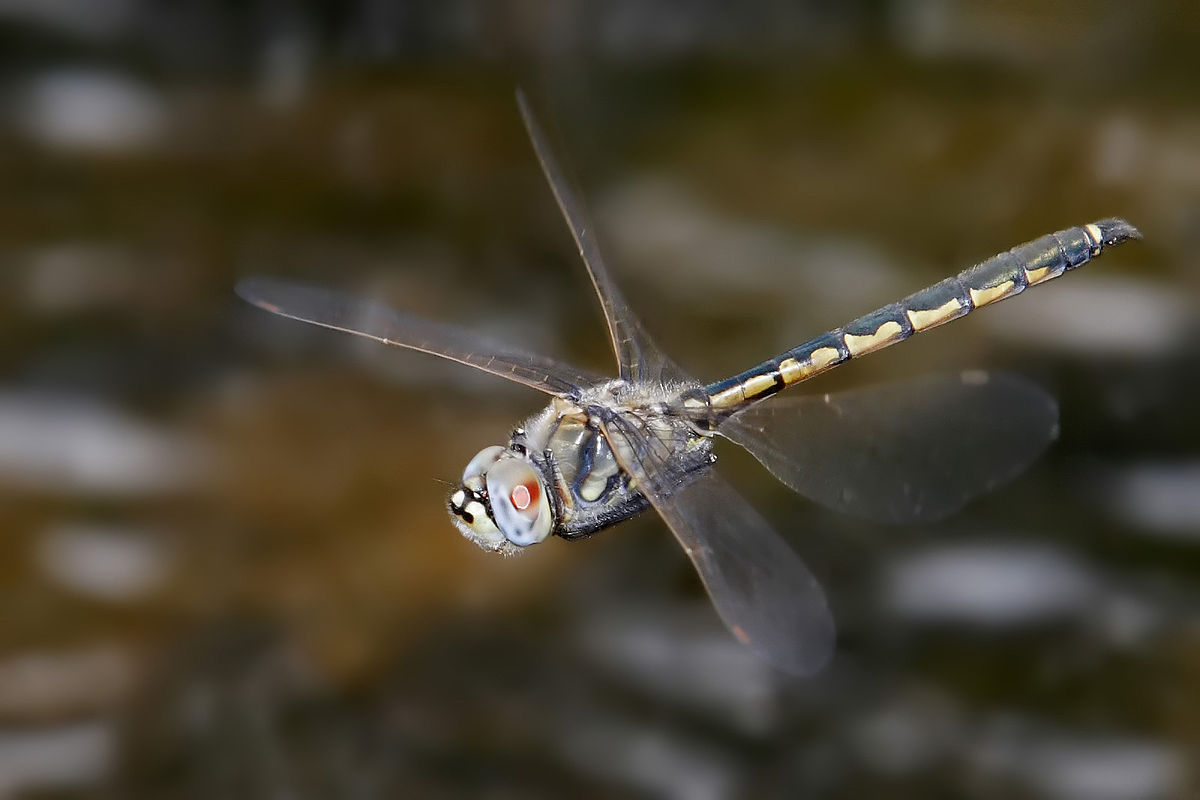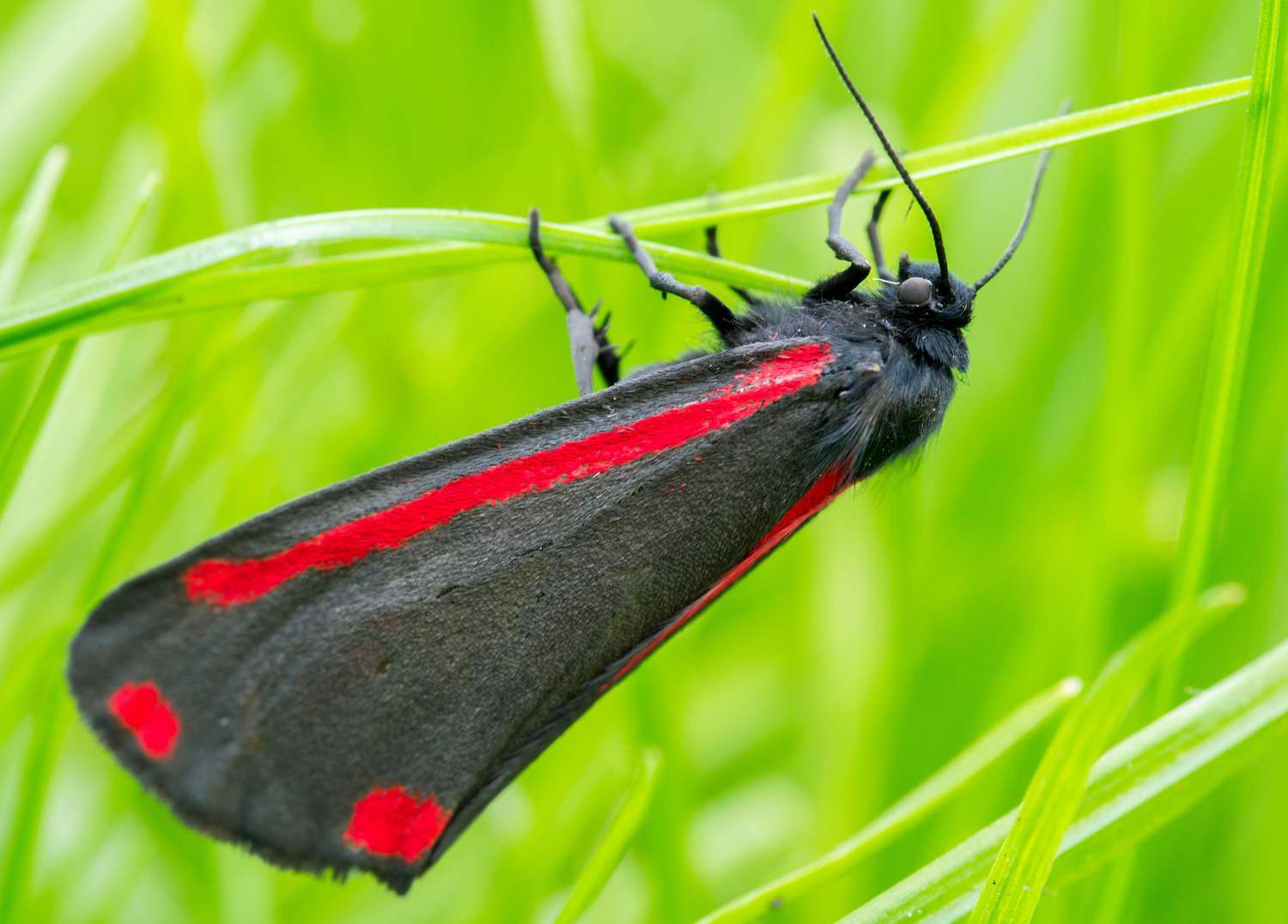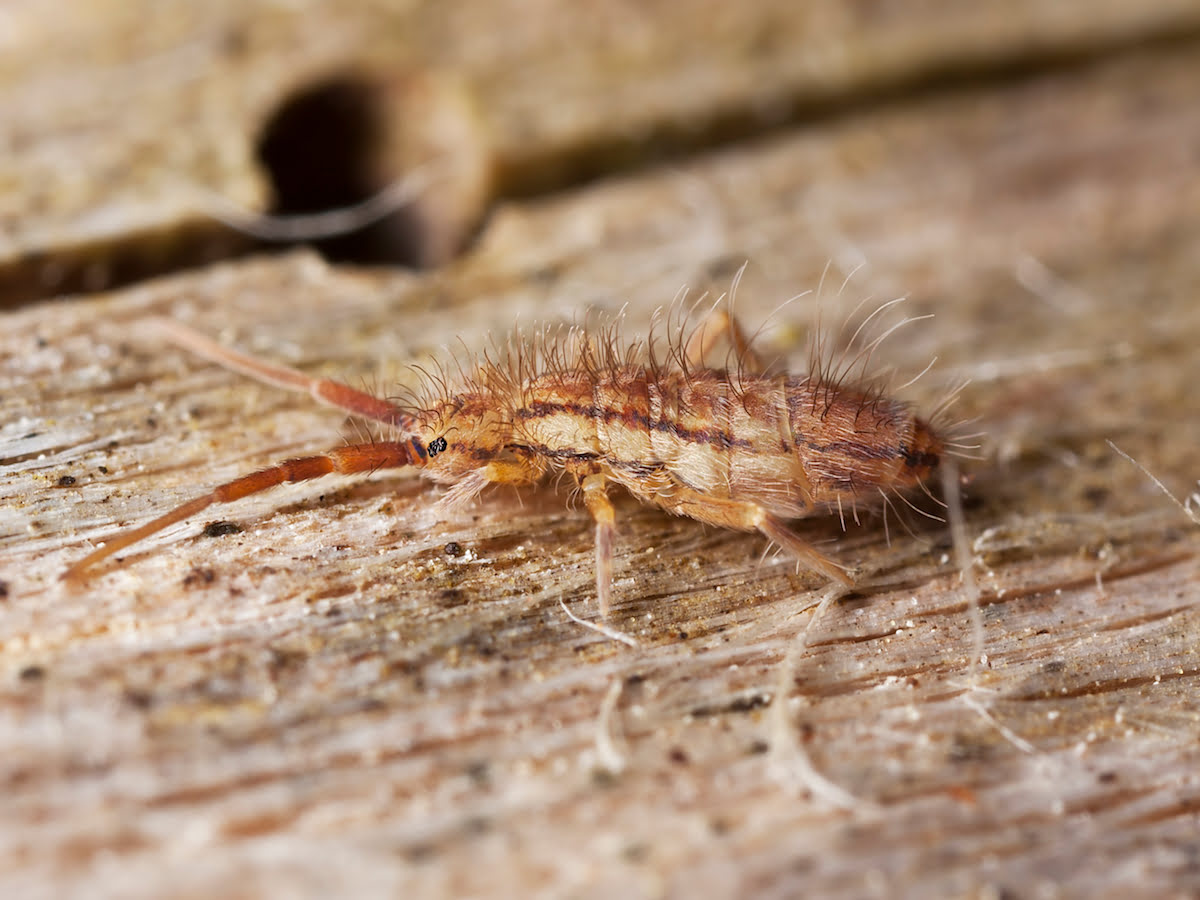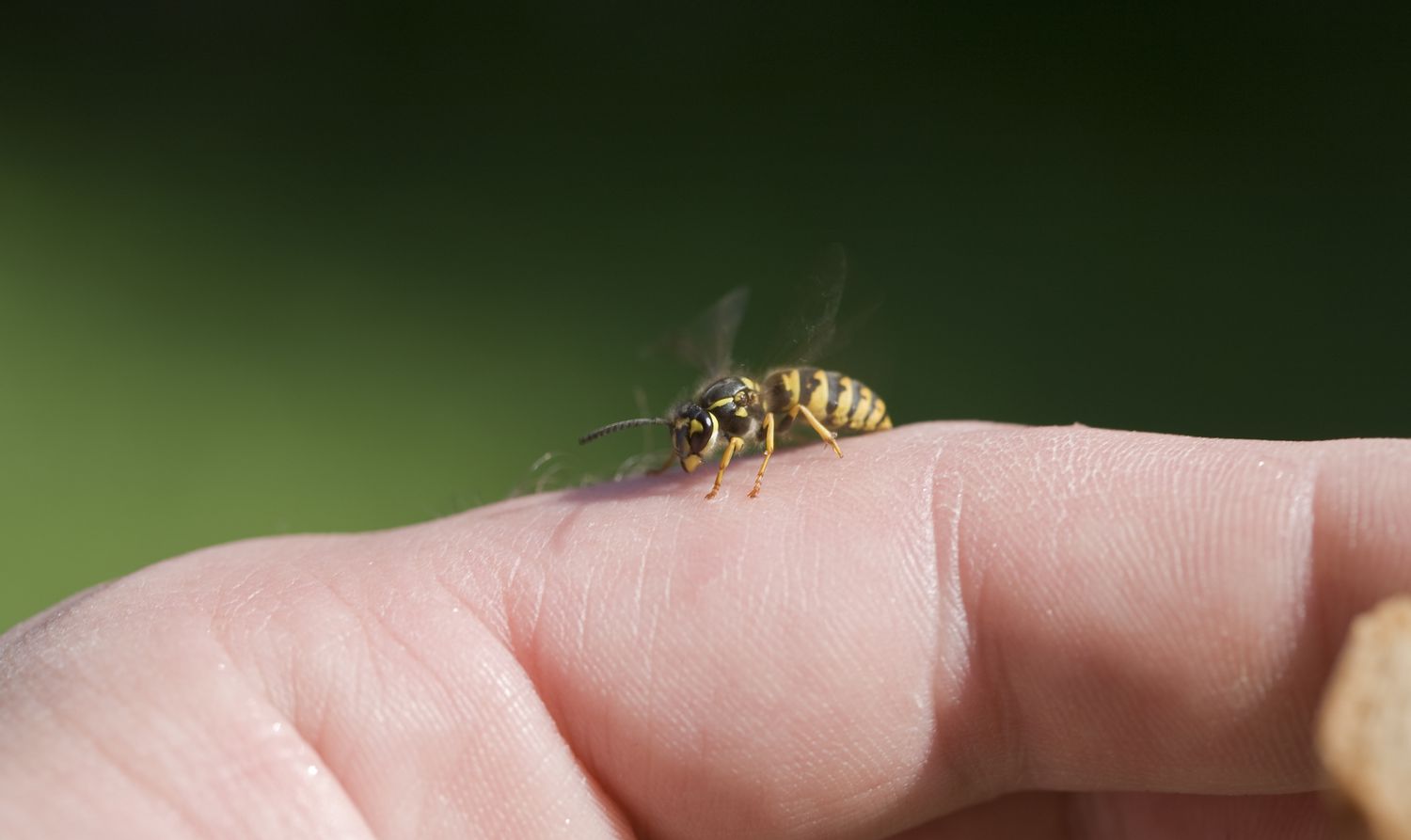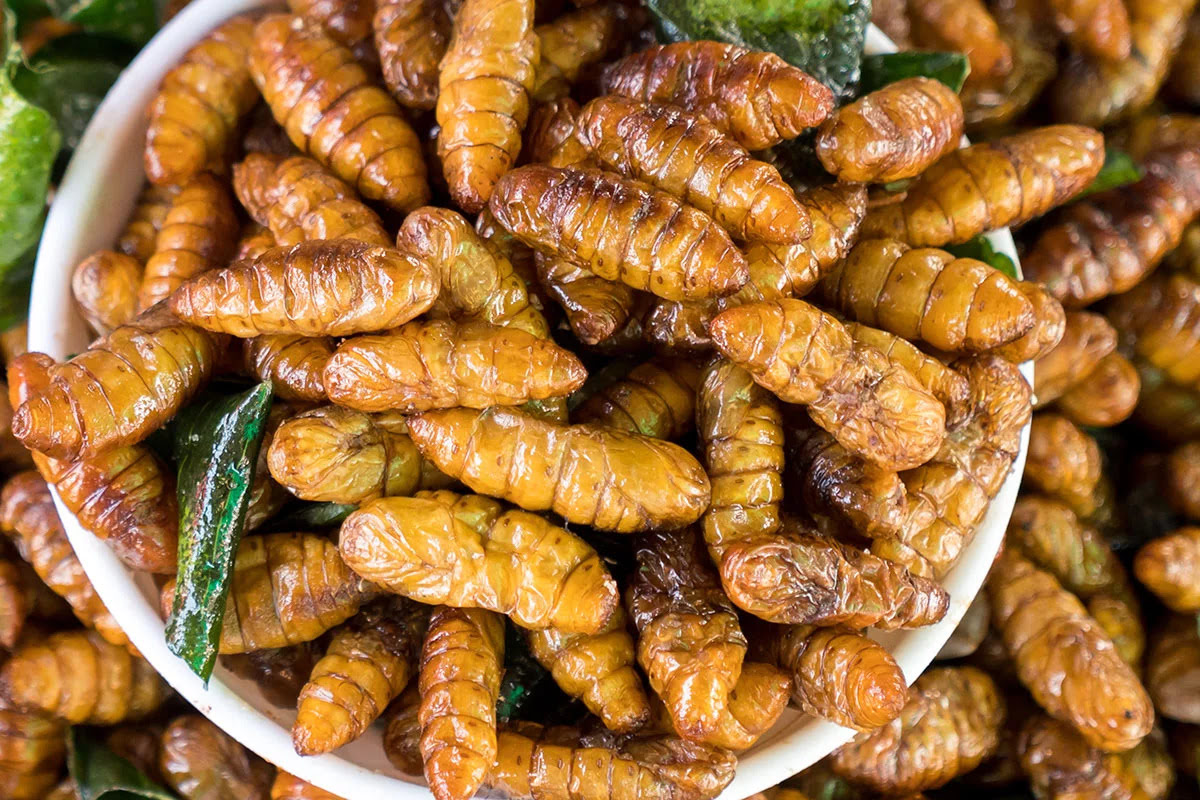Home>Gardening News and Trends>Latest News>What Name Describes A Diet Supplemented By Insects?


Latest News
What Name Describes A Diet Supplemented By Insects?
Modified: January 22, 2024
Looking for the latest news on a diet supplemented by insects? Discover the name that perfectly describes this innovative approach to nutrition.
(Many of the links in this article redirect to a specific reviewed product. Your purchase of these products through affiliate links helps to generate commission for Chicagolandgardening.com, at no extra cost. Learn more)
Table of Contents
Introduction
Welcome to the world of entomophagy, the practice of consuming insects as part of our diet. Insects have been consumed by humans for thousands of years and are a common food source in many cultures around the world. However, in recent years, there has been a growing interest in integrating insects into mainstream diets due to their numerous health and environmental benefits.
Before you dismiss the idea of consuming insects, it’s important to recognize that they are highly nutritious and offer a sustainable alternative to traditional livestock. Insects are packed with essential nutrients such as protein, fiber, vitamins, and minerals. They are also low in fat and contain beneficial fatty acids like omega-3. Incorporating insects into our diets can contribute to a well-rounded and balanced nutrition plan.
While the idea of eating insects may seem unconventional to some, it is important to note that insects have a long history of being a delicacy in many cultures. From crunchy fried crickets in Thailand to roasted mealworms in Africa, insect-based cuisine has become a thriving industry in various parts of the world. Chefs and food entrepreneurs have embraced the unique flavors and textures of insects, incorporating them into creative and delicious dishes that are gaining popularity globally.
Besides the nutritional and culinary appeal, insects offer a solution to some of the environmental challenges associated with traditional livestock farming. Raising insects for food requires significantly less land, water, and feed compared to conventional livestock. Insects also produce lower greenhouse gas emissions and generate less waste, making them a more sustainable protein source. By incorporating insects into our diets, we can reduce the strain on the environment and work towards a more sustainable food system.
Despite the many benefits, there are still challenges and misconceptions surrounding insect consumption. Some people may have concerns about the safety and hygiene of consuming insects. However, research has shown that when reared and processed under proper conditions, insects can be a safe food source. In many countries, regulatory frameworks are being established to ensure the safety and quality of insect-based products.
In this article, we will explore the benefits of insect supplementation in diets, debunk common misconceptions, delve into different types of insect-enhanced diets, and examine the nutritional profile of insects. We will also take a closer look at the culinary and cultural perspectives of consuming insects and the role it plays in environmental sustainability. So, fasten your seatbelts and get ready to discover the exciting world of insect-enhanced diets!
The Benefits of Insect Supplementation in Diets
When it comes to nutrition, insects pack a powerful punch. They are an excellent source of high-quality protein, containing all the essential amino acids that our bodies need. In fact, some species of insects, such as crickets and mealworms, have protein content comparable to that of traditional meat sources like beef and chicken. Protein is vital for muscle growth and repair, as well as supporting numerous biological functions in the body.
In addition to protein, insects are rich in other essential nutrients. They are a good source of vitamins such as B vitamins (including B12), which are important for energy production and brain function. Insects also contain minerals like iron, calcium, and zinc, which play a crucial role in maintaining healthy bones, teeth, and immune function.
One of the key advantages of incorporating insects into our diets is their low environmental impact. Traditional livestock farming is associated with deforestation, water pollution, and high greenhouse gas emissions. In contrast, insect farming has a significantly smaller ecological footprint. Insects require less land, water, and feed to produce the same amount of protein as traditional livestock. Additionally, they emit minimal greenhouse gases and can be raised on organic waste materials, reducing waste and promoting the circular economy.
Furthermore, insects reproduce quickly and have a high feed conversion rate. This means that they can be produced efficiently and on a large scale, providing a sustainable and reliable source of food. Insects also have the potential to be consumed whole, reducing food waste and utilizing the entire organism.
For those with allergies or dietary restrictions, insects can offer a versatile solution. Insects are gluten-free and can be a suitable protein source for individuals with gluten allergies or sensitivities. They are also a potential alternative for those following vegetarian or vegan diets who are looking to incorporate more protein into their meals.
From a culinary perspective, incorporating insects can add diversity to our diets. They bring unique flavors and textures to dishes and can be used in various forms, including ground into flour for baking, added to sauces and condiments, or as a topping for salads and snacks. The versatility of insects allows for creativity in the kitchen, opening doors to new culinary experiences and expanding our palate.
Overall, incorporating insects into our diets can bring numerous benefits. They provide a sustainable and efficient source of protein, essential nutrients, and can contribute to environmental conservation. So, why not embrace the world of entomophagy and explore the possibilities of insect supplementation in our diets?
Challenges and Common Misconceptions
As with any emerging food trend, there are challenges and misconceptions that surround the consumption of insects. One common challenge is the psychological barrier associated with eating insects. Many people have grown up with the notion that insects are pests or simply not suitable for human consumption. Overcoming this mindset and accepting insects as a viable food source requires a shift in perception and education.
Another challenge is the lack of widespread availability and accessibility of insect-based products. While insects have been a part of traditional diets in certain regions, they are not yet widely available in mainstream supermarkets and restaurants. This limited accessibility can make it difficult for individuals who are interested in incorporating insects into their diets to find and try them.
Misconceptions surrounding the safety and hygiene of consuming insects also exist. People may worry about potential allergenic reactions or the presence of harmful substances in insects. However, research has shown that when insects are reared and processed under proper conditions, they pose no greater risk than other commonly consumed foods.
It is important to note that not all insects are suitable for human consumption. There are specific guidelines and regulations in place to ensure the safety and quality of the insects used for food. Proper farming and processing practices, as well as adherence to food safety standards, are crucial to mitigating any potential risks.
Another misconception is that insect-based foods are only meant for adventurous eaters or specific dietary preferences. In reality, insect supplementation can benefit a wide range of individuals, including athletes looking to boost their protein intake, individuals seeking sustainable food options, or those with dietary restrictions looking for alternative protein sources.
To address these challenges and misconceptions, education and awareness play a vital role. By increasing public knowledge about the benefits, safety, and versatility of insect consumption, we can help shift perceptions and encourage wider acceptance. Engaging in open dialogue, promoting sustainable farming practices, and advocating for the availability of insect-based products can help overcome these barriers and make insects a more accessible and recognized part of our diets.
In the next sections, we will explore different types of insect-enhanced diets and delve into the nutritional profile of insects to provide further insight into the potential of incorporating insects into our meals.
Types of Insect-Enhanced Diets
Insect-enhanced diets come in various forms, catering to different dietary preferences and culinary preferences. Here are some of the most common types:
- Whole Insects: Some individuals prefer to consume whole insects as a snack or as part of a meal. Crispy insects like crickets, mealworms, or grasshoppers can be enjoyed on their own, seasoned with spices, or used as a crunchy topping for salads and dishes. Eating whole insects allows for a more direct and authentic experience of entomophagy.
- Insect Flour: Insect flour is created by grinding dried insects into a fine powder. This insect-based flour can be used as a substitute for traditional wheat flour in baking or as an ingredient in protein bars and snacks. Insect flour adds a nutrient-rich boost to recipes, contributing to both the health benefits and the sustainability aspect of insect consumption.
- Processed Insect Products: Insect-based products such as protein bars, snacks, and protein powders are becoming increasingly popular. These products often blend insect flour with other ingredients to create convenient and tasty options for those looking to incorporate insects into their diets but may be hesitant to consume whole insects.
- Insect Protein Extracts: Insect protein extracts are concentrated forms of insect protein, usually in the form of powders or liquids. These extracts can be added to smoothies, shakes, or used as a protein supplement in various recipes. Insect protein extracts provide a pure and versatile source of protein, allowing individuals to easily incorporate insects into their existing dietary routines.
It is important to note that the availability of these insect-enhanced products may vary depending on your location and the specific regulations in place. Some regions may offer a wide array of options, while others may have limited access to insect-based products.
Whether you choose to consume whole insects, experiment with insect flour, or incorporate processed insect products into your meals, the key is to find what works best for your taste preferences and dietary needs. The diverse range of insect-enhanced diets ensures that individuals with different culinary preferences and dietary requirements can enjoy the benefits of insect consumption.
In the next section, we will explore the nutritional profile of insects, shedding light on the specific health benefits they offer.
Nutritional Profile of Insects
Insects offer a remarkable nutritional profile, making them a valuable addition to our diets. Here’s an overview of the key nutrients found in insects:
- Protein: Insects are an excellent source of protein. They contain all the essential amino acids that our bodies need for optimal functioning and muscle repair. In fact, some insect species have protein content comparable to or even higher than traditional meat sources like beef and chicken. This makes insects a valuable protein source, especially for individuals following vegetarian or vegan diets.
- Fat: While the fat content of insects varies by species, many insects are relatively low in fat. Additionally, the fats found in insects often consist of beneficial fatty acids like omega-3 and omega-6. These fatty acids play a critical role in maintaining heart health, brain function, and overall well-being.
- Fiber: Insects are a good source of dietary fiber, which supports healthy digestion and helps regulate blood sugar levels. Including insects in your diet can contribute to meeting your daily fiber requirements and promote digestive health.
- Vitamins and Minerals: Insects are rich in various vitamins and minerals. They are particularly high in B vitamins, including essential nutrients like thiamine, riboflavin, and niacin. These vitamins play a vital role in energy production, brain function, and overall cellular health. Insects also contain minerals such as iron, zinc, and calcium, which are important for maintaining healthy bones, immune function, and overall well-being.
It is worth noting that the nutrient content of insects can vary among different species. For example, mealworms are high in protein and omega-3 fatty acids, while crickets and grasshoppers provide a good balance of protein, fats, and vitamins. The specific nutrient composition of insects can vary based on factors such as diet, rearing methods, and life stage.
When compared to traditional livestock, insects offer several advantages in terms of their nutritional profile. For instance, crickets have been found to have higher iron, calcium, and vitamin B12 content than beef. They also require significantly less land, water, and feed to produce the same amount of protein. Incorporating insects into our diets can contribute to meeting our nutritional needs while minimizing the environmental impact.
Understanding the nutritional profile of insects highlights their potential as a sustainable and nutrient-rich food source. In the next section, we will delve into the culinary and cultural perspectives around the consumption of insects, showcasing the diverse ways in which insects are enjoyed around the world.
Culinary and Cultural Perspectives
When it comes to insects, culinary and cultural perspectives play a crucial role in shaping people’s perception and acceptance of these extraordinary food sources. Insects have a long history of being incorporated into traditional cuisines around the world, and their cultural significance adds depth and flavor to the culinary experience.
One of the most remarkable aspects of entomophagy is the vast array of culinary possibilities that insects offer. From street food vendors in Bangkok serving up deep-fried crickets to gourmet chefs in high-end restaurants creating exquisite insect-based dishes, insects have captured the attention of food enthusiasts and culinary experts globally.
Each insect brings its unique flavor and texture, allowing for endless creative possibilities in the kitchen. Crickets, for example, have a nutty flavor, while mealworms have a slightly earthy taste. This diversity encourages innovation and experimentation, as chefs and home cooks explore different cooking techniques and flavor combinations.
The cultural significance of insects in various regions adds to their appeal. In many cultures, insects have long been considered a delicacy and an essential part of traditional cuisine. In Thailand, insects are a common street food snack, enjoyed by locals and tourists alike. In Mexico, chapulines, or roasted grasshoppers, are a beloved and cherished food, often eaten with tortillas and salsa. In Africa, termites are valued for their taste and nutritional value.
Embracing the cultural perspectives of insect consumption allows us to broaden our culinary horizons and appreciate the rich history and traditions associated with these little creatures. By learning from different cultures, we can incorporate insects into our diets with a newfound appreciation and respect for their place in food culture.
Furthermore, the growing popularity of insect-based foods has led to the emergence of innovative startups and food entrepreneurs. These individuals are pushing the boundaries of culinary creativity, developing innovative insect-based products that can be enjoyed by a wider audience. From protein bars and energy snacks to insect-based pasta and burgers, these products are changing the perception of insect consumption in modern society.
The culinary and cultural perspectives surrounding insects not only make for exciting and adventurous dining experiences but also highlight the potential of insects as a sustainable and nutritious food source. By embracing these perspectives, we can create a more diverse and inclusive food culture that values the rich tapestry of culinary traditions from around the world.
In the next section, we will explore the environmental sustainability aspect of insect consumption, shedding light on how insects can help address some of the pressing challenges faced by our planet.
Environmental Sustainability and Insect Consumption
The environmental impact of our food choices has become increasingly important as we strive to create a more sustainable future. In this context, insect consumption offers a promising solution to some of the pressing challenges faced by our planet.
Compared to traditional livestock farming, insect farming requires significantly fewer resources. Insects are incredibly efficient at converting feed into protein, making them a more sustainable option. They require less land, water, and feed to produce the same amount of protein as traditional livestock, significantly reducing the strain on natural resources.
Additionally, the greenhouse gas emissions associated with insect farming are considerably lower than those of conventional livestock production. Insects produce minimal methane and ammonia emissions, which are major contributors to climate change. By embracing insect consumption, we can reduce our carbon footprint and contribute to mitigating the negative impacts of livestock farming on the environment.
Insects also have a unique ability to thrive on organic waste materials. They can be raised on agricultural by-products, food waste, and other organic matter, effectively converting waste into valuable protein. In this way, insects play a crucial role in promoting a circular economy by reducing waste and utilizing resources that would otherwise go to landfill.
Furthermore, the land requirements for insect farming are significantly lower than those needed for traditional livestock farming. The production of insect protein requires a fraction of the land needed for raising livestock, allowing for more sustainable land use practices. This has the potential to combat deforestation and the loss of biodiversity, which are significant environmental concerns associated with large-scale agriculture.
Insect consumption is not only environmentally sustainable, but it also supports the preservation of traditional ecological knowledge and local food systems in many regions. Insects have been an integral part of traditional diets and cultural practices for centuries, and their continued consumption can help preserve local biodiversity and traditional food cultures.
Incorporating insects into our diets can have a considerable positive impact on the environment. By choosing insect-based foods, we can contribute to a more sustainable and resilient food system that conserves natural resources, reduces greenhouse gas emissions, and supports the transition towards a more sustainable future.
As we have explored the nutritional, culinary, and environmental aspects of insect consumption, it becomes evident that insects have the potential to revolutionize our diets and contribute to a more sustainable and resilient food system. The benefits of insect supplementation in diets extend beyond personal health and culinary enjoyment, as they offer a solution to the global challenges of food security, environmental sustainability, and reducing our ecological footprint.
Now that we have examined the various dimensions of insect consumption, it’s clear that incorporating insects into our diets can have far-reaching positive impacts. It is up to us to embrace this sustainable and nutritious food source, challenge misconceptions, and explore the exciting world of insect-enhanced diets.
Conclusion
In conclusion, incorporating insects into our diets offers numerous benefits, ranging from their exceptional nutritional profile to their minimal environmental impact. These small creatures are packed with high-quality protein, essential nutrients, and beneficial fatty acids. They can be enjoyed in various forms, including whole insects, insect flour, processed insect products, and insect protein extracts.
Challenges and misconceptions surround the consumption of insects, such as psychological barriers, limited accessibility of insect-based products, and concerns about safety and hygiene. However, education and awareness are key to overcoming these challenges and promoting wider acceptance of insect consumption. By understanding the cultural and culinary perspectives surrounding insects, we can appreciate their value and expand our culinary horizons.
From an environmental standpoint, insects are a sustainable alternative to traditional livestock. Insect farming requires less land, water, and feed while producing lower greenhouse gas emissions. By embracing insects as a food source, we can contribute to a more sustainable food system, reduce our carbon footprint, and promote a circular economy by utilizing organic waste materials.
As we navigate the path towards a more sustainable future, the role of insects in our diets becomes increasingly significant. They offer a solution to the challenges of food security, environmental sustainability, and promoting a diverse and nutritious diet. By embracing the potential of insect supplementation, we can create a more resilient and sustainable food system that respects both human health and the health of our planet.
So, let’s open our minds and taste buds to the world of entomophagy. Let’s explore the culinary delights, nutritional benefits, and sustainable solutions that insects have to offer. By incorporating insects into our diets, we can make a positive impact on our health, the environment, and the future of food.
